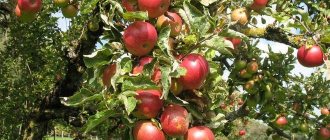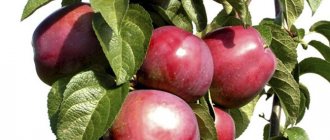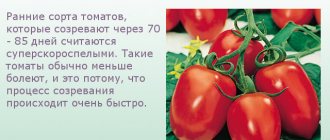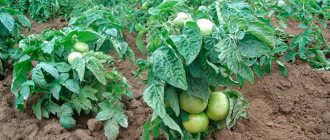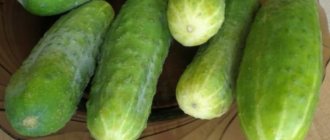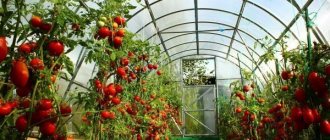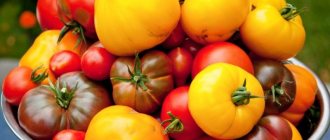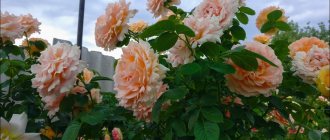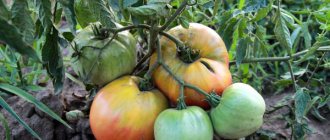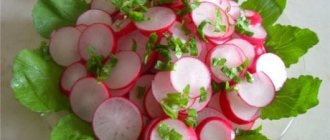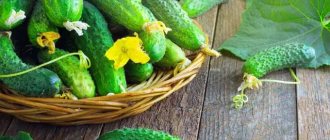The Leningrad region has a warm and humid continental climate, so any berries can be grown here without any problems. Along with cherries, raspberries and currants, summer residents plant honeysuckle on their plots - a vitamin-rich, unpretentious and tasty berry that pleases with stable yields and strong immunity. It is not afraid of frost and wind, it is universal in use: the fruits are eaten fresh, dried, or frozen. Let's consider the description of honeysuckle varieties for the Leningrad region and make a rating of the best.
Requirements for choosing honeysuckle for the Leningrad region
In the North-Western region there is no abundance of fertile soils, so the main requirement for the variety is undemanding soil. Otherwise, the plant grows weak and the yield will be unstable. The region is dominated by loamy and sandy loam soils with neutral or negative acidity. Before planting, it is recommended to lime them, dig them up and add a mixture of peat, manure, and compost.
Honeysuckle must be frost-resistant to withstand sudden temperature changes and spring frosts. Recommended winter hardiness indicators are -25°C. In this region, varieties that are resistant to high humidity are popular, because due to frequent rains and fogs, the berries crack and lose their taste and marketability.
Attention! Rains cause the development of viral and fungal diseases: gray rot, powdery mildew, fruit rot. It is recommended to plant varieties with immunity to diseases and insect pests.
Diseases and pests
The most common disease in honeysuckle is spotting. You can recognize the disease by the spots on the leaves of red color with different shades. This is due to high humidity and strong thickening.
Spotting most often occurs in honeysuckle due to improper care.
Among other diseases, powdery mildew, sooty fungus, and tubercular disease are less common. Aphids, honeysuckle flies, and scale insects often appear on honeysuckle branches. In order not to be left without a harvest, it is recommended to carry out preventive spraying with drugs.
The best varieties for the Leningrad region and the North-Western region
A selection of the best honeysuckle varieties will help you study the characteristics of each, compare the size and taste of the fruits, yield and early fruiting.
Dessert
The variety is mid-season, frost-resistant and unpretentious in cultivation. Medium-sized and spreading bushes consistently bear fruit both in sunny areas and in shade or partial shade. Leaves are rich green, oval. The color of the berries is interesting - purple, with a burgundy tint. Weight - about 2 g, the tear is dry, the skin is strong, with a waxy coating. The pulp is tender and juicy, the taste is sweet, with a pleasant sourness, no bitterness. The berries do not wrinkle or crack; they are used for storage and transportation.
Moraine
The mid-early variety is immune to diseases and is rarely damaged by pests. The harvest is harvested in mid-June, the fruits ripen smoothly and do not fall off. The bushes are vigorous, with greenish-brown shoots, the berries are large, weigh up to 1 g. The shape is elongated, pitcher-shaped, blue-blue in color, with a waxy coating. The pulp is juicy and aromatic, the taste is sweet and sour.
To increase productivity, 2-3 other varieties are planted next to Morena honeysuckle (for example, Blue Spindle, Viola). The berries are used to make jam or eaten fresh.
Nymph
Honeysuckle Nymph is common in all regions of Russia. It is easy to care for and is not affected by fungal diseases. The variety is frost-resistant down to -30°C, so the plant is not afraid of frost and cold. The ripening period is mid-early, the bushes are vigorous. The leaves are large, dark green, the flowers are large. The berries are elongated, spindle-shaped, the average weight of one is 0.8 g. The color is blue-blue, the surface is slightly lumpy. The taste is sweet and aromatic, the berry is good in any form.
Attention! To increase productivity, the first pruning of the plant is carried out 2-3 years after planting. In autumn, dry and short branches and shoots with poor growth are removed. After another 3-4 years, the honeysuckle is rejuvenated - all old branches are cut off, leaving only young shoots on the lower shoots.
Swan
The variety is mid-season, the first harvest is harvested in early or mid-July. Swan is resistant to shedding; the fruits remain on the branches for 3-4 weeks after ripening. The bushes are compressed, vigorous, the leaves are large. The berries are oval, with a curved base, blue-blue in color. The fruits are one-dimensional, average weight - 1.2 g, the skin is thick, the waxy coating is weak. The consistency is dense, gristly, the taste is sweet and sour. The tasting score of the berries is 4.8 points. Resistance to frost and drought is high.
Malvina
Medium-sized bushes with an oval crown look original in garden plots. The shoots are thin and straight, the leaves are dark green, large and oval. The berries are pear-shaped and elongated, weighing about 1 g per one. The color is blue-blue, with a thick layer of waxy coating. The taste is sweet and sour, the aroma is rich.
Honeysuckle Malvina is grown for personal consumption and on a production scale - the berries are transportable, have a shelf life, and do not spoil on the road.
Volkhova
Mid-season universal variety. The plant is medium-sized, with thick and straight shoots. The berries are oval, elongated, with a pointed tip. The weight of one is about 0.8 g, some specimens reach 1.4 g. The color is blue-blue, the peel is of medium thickness. The taste is sweet and delicate, tasting score - 4.7 points.
Yoke
Volkhova is not damaged by diseases or pests, but is susceptible to soil composition - for a regular harvest, it is recommended to add superphosphate, wood ash, and potassium salt to the soil. The variety requires planting a pollinator nearby and sufficient moisture.
Yoke
The plant is medium-sized, fast-growing, the shoots are straight, with weak pubescence. The variety is early-bearing and begins to bear fruit 3 years after planting. It is unpretentious in cultivation and is rarely affected by diseases and insects. The berries are elongated, oval, blue-violet in color, the weight of one is about 0.8 g. The waxy coating is medium, the skin is durable. The consistency is delicate, the taste is sweet and sour, not bitter.
Attention! Some honeysuckle berries are bitter. The reasons for this lie in the characteristics of the variety and non-compliance with care rules. To remove the unpleasant aftertaste, the berries are frozen - low temperatures remove the bitterness. Compotes and jelly are made from such fruits.
Masha
The mid-season variety Masha is popular in all regions of the country. Summer residents value honeysuckle for its taste: the pulp is sweet and sour, with a rich aroma and a slight bitterness. Tasting score: 4.4 points. The average weight of the fruit is 1.1 g, the tear is dry or semi-dry. The color is rich blue, there is a medium waxy coating that protects the berries from cracking and mold.
The variety is resistant to temperature fluctuations in winter and is not affected by wasps and aphids. To increase productivity, honeysuckle is planted in sunny and spacious areas, with 2-3 more varieties placed nearby.
Pushkinskaya
An early-ripening dessert variety, harvested in early summer. The bushes are medium spreading, with thick shoots. The leaves are large, dark green. The berries are cylindrical, bluish-blue, thin skin, with a waxy coating. The weight of the fruit is about 1 g. The taste is delicate, sweet and sour, with a pleasant aroma.
The variety is suitable for industrial cultivation, processing, transportation and storage. The crop is early-bearing - the first harvest is harvested 3-4 years after planting.
Beautiful fruitful plant
Lush bushes delight with their attractive appearance; they will beautifully cover a garden gazebo and successfully disguise unsightly walls and an old fence.
Edible honeysuckle bushes are quite tall, reaching two and a half meters - this is convenient for caring for them. With careful care and a suitable climate, they can grow for more than 50 years, but the fruiting period does not exceed one decade . The berries have a specific taste, slightly reminiscent of sweet and sour blueberries.
Not all honeysuckle berries are edible. Orange and red fruits are poisonous. Only oblong blue and black berries can be eaten.
In terms of productivity, this crop is inferior to raspberries, currants and gooseberries. During fruiting, 1-1.5 kilograms are usually harvested from one bush.
Types of honeysuckle
Breeders have long been successfully developing new varieties, dividing them into subgroups, each of them corresponding to certain growing conditions. Gardeners choose according to the following classification:
- Fianit, Sineglazka, Izyuminka are good for the climatic conditions of the Urals.
- Iksa, Sibiryachka, Cinderella, Gerda are recommended for the Siberian region.
- Dolphin and Rassvet showed themselves well in the Primorsky Territory.
- Ramenskaya, Gzhelka, Kubyshka, Korchaga, Lakomka are the best varieties for the Moscow region and neighboring regions.
- Amphora, Yulia, Malvina, Omega are suitable for growing in the Leningrad region and nearby territories.
When choosing a variety, special attention should be paid to the flowering period of the bush. It should correspond to the time of activation of pollinating insects. The crop yield largely depends on this.
Honeysuckle is a frost-resistant crop. It is able to survive winters even in regions where the air temperature drops to ─ 55 Celsius.
Early varieties of honeysuckle for the Leningrad region
Titmouse
Early varieties produce a harvest already at the beginning of summer, the fruits are used for fresh consumption and for preparing winter preparations.
- Summer residents highlight the Sinichka variety , which is universal in use and unpretentious in cultivation. The berries are oval, weigh about 0.8 g, the color is yellow-blue, almost black, rich. The taste is harmonious sweet and sour. Tasting score: 4.5 points.
- Among the early ripening varieties, honeysuckle Pamyati Kuminova is noted. The bushes are medium-sized, shoots with weak drooping. The weight of the fruit is 1.3 g, the color is blue, the skin is strong. The taste is sweet and aromatic, the flesh is tender in taste, without bitterness. The variety is drought-resistant and frost-resistant, the tasting rating of the berries is 4.8 points.
Average
Mid-ripening varieties ripen 2-3 weeks later than early-ripening ones. The fruiting period is extended, honeysuckle is resistant to powdery mildew, ramularia, cercospora, and branch drying. Summer residents often choose Omega and Elizabeth.
- Honeysuckle Omega It is distinguished by a flat-round crown and large oval berries. The weight of the fruit is about 1 g, the color is blue, the skin is strong, with a thick waxy coating. The taste is sweet and sour and delicate, rating - 4.5 points. The variety is frost-resistant, early-fruiting, and easy to grow.
- The Elizabeth berry is oval, weighs from 1.2 to 1.8 g, with a bumpy surface. Taste rating: 5 points, sweet flesh, rich aroma. Elizabeth’s bushes are slightly spreading; regular pruning is done to increase productivity. The variety is resistant to heat, drought, frost, diseases and pests, and is suitable for industrial cultivation.
Late
Late-ripening honeysuckle produces a harvest in late July or early August . The berries make vitamin-rich and delicious preserves, jams, and confitures. The late variety Selena . The bushes are dense, medium-sized, with a rounded crown. The berries are black, with a blue waxy coating, a blunt tip, weigh about 1 g. The taste is sweet and sour, with a bitter taste. Selena is universal in use - suitable for drying, transportation, and cooking.
Another common late variety is Gorlinka. The berries are large, pitcher-shaped, with thick skin. The color is blue, there is a medium waxy coating. The separation is dry, Gorlinka’s tasting score is 5 points. The pulp is sweet, sour, refreshing. After processing, honeysuckle does not lose its vitamin and taste qualities. The turtle dove is not affected by diseases and pests and is resistant to drought, heat and frost.
Application in landscape design
Honeysuckle is a popular ornamental crop for landscaping garden plots and city parks in Europe. Climbing varieties are recommended for planting next to a fence or structure. Upright varieties can be planted as a tapeworm, as part of a composition, or to form a hedge. The plant is combined with barberry, medium-sized fruit and berry bushes and tall perennial flowers (peonies, dahlias, gladioli).
Other options
To choose a suitable variety, pay attention not only to the timing of ripening, but also to the size of the fruit, self-fertility, and appearance of the plant.
Large-fruited
Common large-fruited varieties are Bakcharsky giant and Daughter of the giant. The name honeysuckle speaks for itself - every year gardeners collect large and heavy fruits.
- Bakchar giant mid-season, extended ripening period. The shoots are thick, the leaves are large, dark green. The berries are oval blue, with a bloom, weigh about 1.8 g. The taste is sweet and sour, the score is 4.8 points, the flesh is fleshy and tender.
- The Giant's Daughter is a medium-late, versatile variety. The bushes are vigorous, the shoots are fast growing. The weight of the berry reaches 2.5 g, the color is blue-violet. The consistency of honeysuckle is dense, cartilaginous. There is a waxy coating, the tear off is dry. The taste is refreshing, sweet and sour, rating - 4.8 points. Winter hardiness and drought resistance are high, heat resistance is average.
Self-pollinating
Self-pollinating varieties have bisexual flowers, so they do not require insects for pollination. This honeysuckle bears fruit consistently in any weather.
- Among the self-pollinating varieties, Yugan honeysuckle is distinguished. The bushes are medium-sized, about 2 m high. Yugana ripens gradually, the crop is harvested 2-3 times per season. The berries are pitcher-shaped, weigh about 1.5 g, blue in color, with a thick waxy coating. The taste is sweet, with a refreshing aroma, rating - 4.8 points. Productivity is about 5 kg per bush per season.
- Another well-known self-fertile variety is Sibiryachka. The weight of the berry is about 1 g, the color is dark purple, with a blue tinge. The taste is sweet and aromatic, tasting score - 4.9 points. Sibiryachka's bushes are medium-sized, shoots with weak pubescence. The harvest is suitable for fresh consumption, processing and transportation.
Decorative
Decorative honeysuckle attracts with its lush crown and colorful flowers. Depending on the variety, the berries acquire red, yellow, orange, and purple colors. A beautiful type of decorative honeysuckle is golden. The height of the dense bush is up to 4 m, the leaves are dark green, the flowers are golden yellow. Flowering begins in May and lasts 2 weeks. The plant rarely gets sick and is easy to care for.
Honeysuckle will decorate your home or garden plot. The height of the bush is 3 m, the leaves are thick, rich green. The flowers are lemon-red. This species grows well in the shade, is frost-resistant, but requires moisture.
This is interesting:
Decorative honeysuckle - planting and care
Landing Features
To plant honeysuckle in a permanent place, it is necessary to take into account the optimal planting period, select high-quality planting material, select a site for planting, etc.
When to plant
Gardeners recommend planting honeysuckle bushes after harvesting, when the plants are dormant. The optimal period for this would be the end of August-November. If the procedure is postponed to the beginning of the season, then success will not be guaranteed. Since honeysuckle blooms quite early (in March), you need to have time to plant the bush before the buds swell. Otherwise, the plant will get sick or will not have time to adapt to the new place.
Did you know? The Chinese are convinced that drinking infusions of dried honeysuckle flowers prolongs life.
Selection and preparation of planting material
It is best to purchase seedlings in specialized nurseries, where each plant has a description: variety, age, required pollinators, etc. The root system must be well developed, without signs of rotting or other disease.
the shoots should be 2 years old, up to 40 cm high, with several shoots on which healthy buds are visible.
Site selection, site preparation
The area selected for planting honeysuckle must meet the following conditions:
- the place should be well lit, sunny, open, not shaded;
- sandy loam soil with neutral acidity is well suited;
- areas with stagnant water should be avoided;
- the groundwater table must be more than 1.5 m;
- Before planting honeysuckle, the ground must be cleared of weeds and other debris.
Technology and planting scheme
Planting honeysuckle seedlings is carried out according to the following scheme:
- You need to dig a hole 40 cm deep and 40 cm wide in advance (3 weeks in advance).
- Install drainage at the bottom of the hole.
- Mix chernozem with 1 bucket of humus, 30 g of superphosphate, 30 g of potassium salt, pour into the recess.
- Soak the seedlings (roots) 2 hours before planting in water or in growth stimulants “Kornevin”, “Heteroauxin”.
- Make a tubercle from the nutrient mixture, place the seedling vertically on it, straightening the roots.
- Sprinkle the plant with soil, tamping it down a little.
- The root collar should deepen by 5 cm.
- Make a hole around the bush and pour in 1 bucket of warm water.
- Cover the tree trunk area with mulch.
Recommendations for choosing a variety
To choose the right variety, gardeners recommend keeping a few tips in mind. Shade-tolerant varieties are suitable for growing in the shade; any varieties are suitable for a sunny area. If honeysuckle is cultivated for sale, pay attention to large-fruited and transportable berries, which are protected from cracking and covered with a thick waxy coating. For cooking, honeysuckle with sweet and sour pulp, without bitterness, is planted. Fruits with a bitter taste are used for freezing.
When choosing a variety, pay attention to the height and size of the bush. Compact plants with a compressed crown are suitable for small areas; vigorous and spreading ones are suitable for spacious areas. Decorative honeysuckle will decorate any garden.
When is it better to plant honeysuckle - in spring or autumn?
Any gardener who has never encountered this crop will probably wonder whether autumn or spring planting is preferable? So, the procedure can be successfully completed both in the fall and in the spring. But it is still better to plant in open ground in the fall.
Advantages of autumn planting:
- The plant takes root better during this period.
- The bush safely grows roots and takes root in comfortable conditions.
- During the autumn procedure, stratification occurs (that is, hardening due to cold), and the plant becomes stronger and more resilient.
The positive aspects of planting a plant in the spring is the opportunity to carefully observe the seedling, and if any problems begin, you can solve them by watering, fertilizing, treating against pests and diseases. A significant disadvantage is the possibility of planting at the wrong time - too early or too late (at the time of bud break), which will have a very negative impact on the shrub.
So, with the question - when is it better to plant honeysuckle, in spring or autumn, every gardener must decide for himself, but it is still better to do it in the fall.
Characteristic
Blue honeysuckle is a low, perennial shrub.
His height is 60 cm and above. In Russia it grows in the Central part, Eastern Siberia and the Far East, and is also found in other areas. There are wild and cultivated plant species. In nature, it can be found in places such as:
- floodplain forests
- tundra
- marshy areas
- river valleys
Many plant varieties tolerate frost easily and are unpretentious. For successful growth, regular watering and loosening of the soil under the bush is necessary. It should be noted that the root system is close to the surface of the earth.
The procedure must be carried out carefully so as not to damage it:
- When individual branches dry out, they must be removed with pruning shears.
- Experienced gardeners advise planting different varieties.
- This will ensure a fruit harvest.
- This happens due to mutual pollination.
The berries are oblong, deep blue in color. They have a sweet and sour taste. Some species have a bitter taste. When choosing a variety, you need to know that there are edible and poisonous fruits.
Interesting Facts
English, Honeysuckle
There are about 250 varieties of honeysuckle on planet Earth. Wild species are more often found in Siberia, the Himalayas and East Asia, on the coast of the Sea of Okhotsk, Kamchatka, and Sakhalin. There are 14 wild varieties growing on the territory of the Russian Federation.
Honeysuckle was nicknamed “shameless.” This nickname was given due to the fact that the bark of some varieties peels off and flies off, exposing the branches.
You definitely need to know that honeysuckle can be poisonous. One of these varieties is Wolf Berry. Dark colored berries are suitable for consumption: black, blue, purple. Red and orange fruits grow on poisonous bushes.
Honeysuckle ripens earlier than other berries. It will give you the vitamin boost you need after the long cold months.
